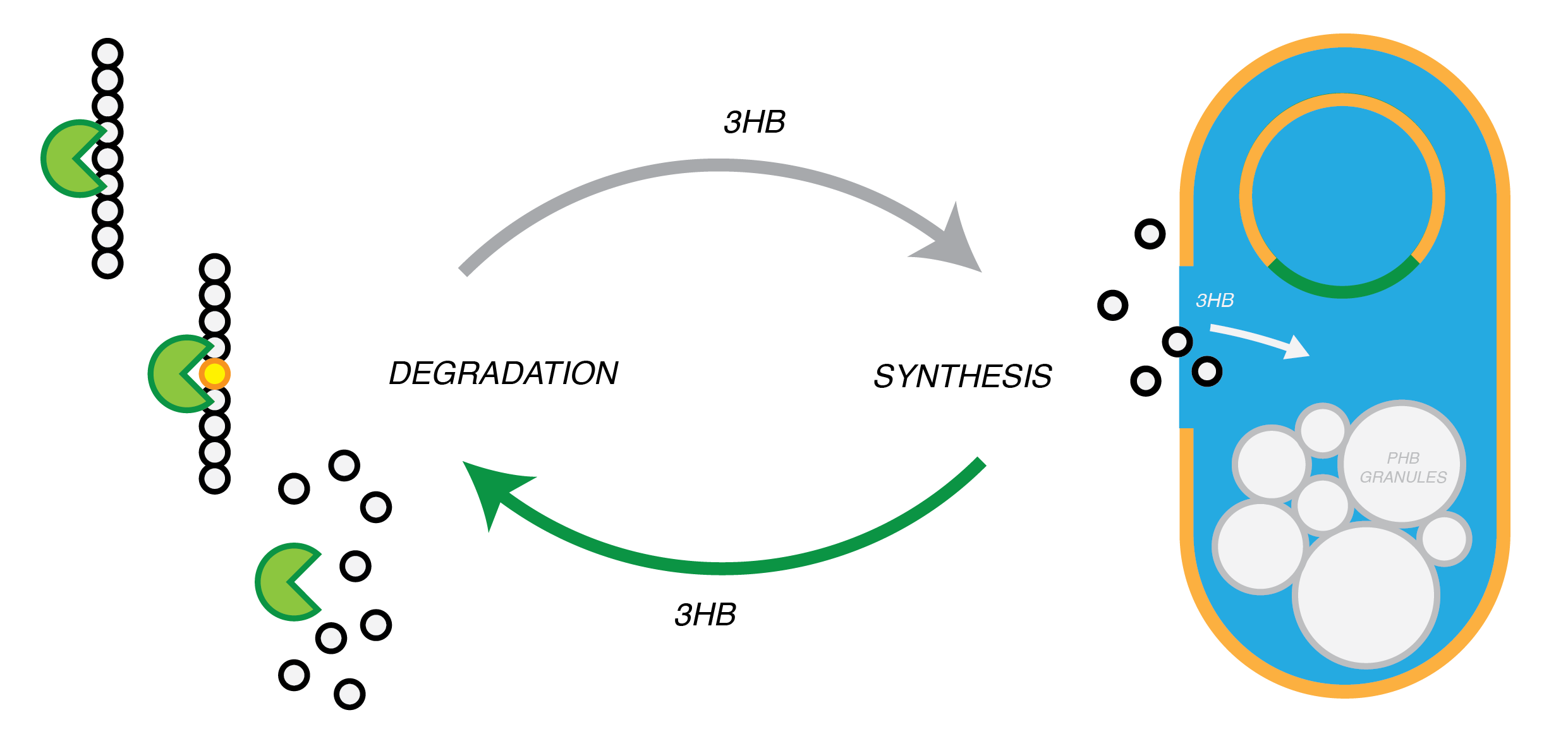Team:Imperial College/tour
From 2013.igem.org
We have engineered bacteria to turn unrecyclable waste into bioplastic
We have taken an expensive byproduct of recycling facilities, a type of mixed waste and turned it into something quite amazing. A material that can be used for a diverse range of applications from making your lunchbox to a 3D printed tissue scaffold; this material is the bioplastic poly-3-hydroxybutyric acid(P3HB). Our system is designed to maximise the recovery of resources from the waste and so we have also investigated how we can use the oil based plastics within the waste to produce the comommodity chemical ethylene glycol. We are passionate about using synthetic biology to help us move towards a more sustainable economy. We have also considered what happens to the material we produce after it is used. This led us to develop the first recycling system for P3HB and a biological one at that. The other well known bioplastic, poly lactic acid (PLA) is also expanding in use and so we developed a system to turn it back into its constituent monomers so that it can be chemically resynthesised or even created in vivo.
Click here to find out how we made P3HB and broke down oil derived plastics and here to see how we recycled P3HB and PLA.
Our System: Modular and Plastic Looping E. coli (M.A.P.L.E.)
Module 1: Resourceful Waste
Non-recyclable waste is sourced from a recycling centre, placed in a bioreactor with our M.A.P.L.E system which degrades the waste and synthesises the bioplastic P(3HB).
We have data showing we have successfully created P(3HB) from mixed waste.
We successfully synthesised P3HB
Guided by our modelling we improved the native phaCAB operon, creating a new hybrid promoter phaCAB version that increased plastic production 11 times.
We have data showing we have successfully created P(3HB) from mixed waste.
Module 2: Plastic Fantastic
Plastic Fantastic is a complete P(3HB) bioplastic recycling platform, where P(3HB) is degraded into monomeric form and then re-polymerised back into de novo P(3HB) for future applications.
Module 2: -We have designed and built the first P3HB bioplastic recycling system. -We designed, and tested a functional P(3HB) degradation biobrick, Phaz1 -Phaz1 degrades, P(3HB), including the P(3HB) our own E. coli synthesised. -Our metabolic modelling has guided our design to improve P(3HB) synthesis from 3HB which we have shown the bacteria can use as a sole carbon source.
Understanding waste management
We thoroughly investigated how the system we have created would fit into the real world. We have identified a waste material which is an economic burden to those who produce it, this material is called Solid Recovered Fuel(SRF) but we'll refer to it as mixed waste from now on. By using this waste we can not only make a profit but also offer a more environmentally sound option for dealing with the waste where the alternative is polluting and resource inefficient.
The product we are producing has many intrinsic benefits such as being industrially biodegradable and produced from sustainable sources as well as being a commodity with increasing market share.
Trips to a materials recovery facility and London City Hall highlighted the fact that recovering value from waste materials is one of the primary aims of waste management in London, the UK and indeed Europe. Importantly it highlighted the need for social solutions combined with technical ones to reduce the waste we produce in the first place and then to maximise the recovery of as much of it as possible. We promoted reducing waste and recycling across campus with our posters highlighting 5 waste offenders and through a strong social media campaign highlighting shocking and interesting issues.
MAPLE- a technology to change your mind
We have thought a lot about how our technology could change into the future and the impacts it might have. From this MAPLE evolved - Modular and Plastic Looping E.coli. We pictured how the technology could be used in different settings with various implications. In picturing this we were influenced by the DIY biology culture which is springing up and the the homebrew industry. We were intrigued by the prospect of coupling local bioplastic recycling with 3D printing and how people could start to see their waste plastic as something valuable, something which could become something beautiful and useful. You can find out more here about MAPLE's different incarnations.
Communicating our Project
We have communicated our project at several events and across social media. Once we had produced a palette of different colours from various bacterial pigments, we set about recreating painting masterpieces using the humble media of E.coli on agar petri dishes. People loved these and it brought many visitors to our pages. They became so popular that people started putting in requests, with Calgary iGEM team giving us the inspiration for our bacterial 'The Jack Pine'.
The Celebration of Science was a week's long spread of science events covering all sorts of topics. We presented our project as part of a series of lectures. Our talk was very well received as something of a contrast to the classical study of biology which had preceded us. The people we spoke to afterwards were particularly interested in the difficulties of engineering biology and also the capabilities of the technology.
Collaborations
 "
"





